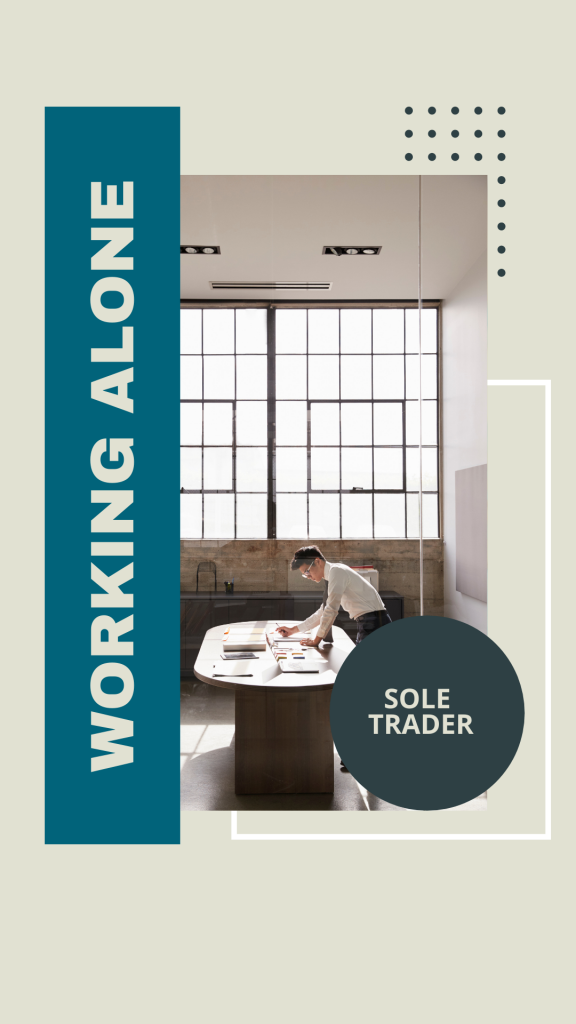
A sole trader in Australia, often described as a contractor, is a person who has taken the step to go into business for themselves entirely alone. This can happen in order to secure more freedoms than working as an employee or it can happen as an entrepreneurial first step when deciding to establish a business.
The Australian Government describes a sole trader as a person who is legally responsible for all aspects of the business including any debts and losses, and day-to-day business decisions.
The advantages to being a sole trader are the simplicity of its structure and the initial setup.

If you’re looking at starting your business as a sole trader, consider the following key elements. A sole trader business structure:
- is simple to set up and operate
- gives you full control of your assets and business decisions
- requires fewer reporting requirements and is generally a low-cost structure
- allows you to use your individual tax file number (TFN) to lodge tax returns
- doesn’t require a separate business bank account, although this is recommended to make it easier to keep track of your business income and expenses
- requires you to keep financial records for at least 5 years
- has unlimited liability and all your personal assets are at risk if things go wrong
- doesn’t allow you to split business profits or losses made with family members
- makes you personally liable to pay tax on all the income derived
Accounting Obligations
In Australia, being in business for yourself is rewarded with a presumption of self-management. There is flexibility (for example in working hours) and there is opportunity (you pocket the profits from all your own work) and that makes for a good lifestyle. However, as with all freedom, responsibility increases.
When you decide to become a sole trader, you are still taxed as an individual, but you have to manage this yourself. You have to report your income in your tax return, and yu are expected to know how much tax you have to pay, and to have that ready to pay. Your taxes are lodged through your tax file number and you pay the same rates as employees.
Record keeping and Tax payments
Because you are now in business for yourself, you have to keep your records for five years. This means all your receipts, log books, and reconciled bank statements should be easily accessible and kept in excellent condition.
You have to pay your own tax and you have to be keeping an eye on how much you owe and how much you have ready to pay. At first you can either pay your tax throughout the year or you can wait for the end of the year until you lodge your first tax return. Once you have lodged a tax return, you will enter the ATO system called the PAYGI system (Pay As You Go Instalments). This system asks you to pay an amount each quarter with your BAS toward a likely tax bill at the end of the year. The amount you pay is usually represented by a percentage of your income based on your previous tax return. Sometimes it might simply be a flat amount that means you have paid the bulk of your income tax when the end of year return is done.
If you as a sole trader have a quarter where you don’t earn very much or are forced to reduce your work hours (such as illness or COVID-19) you can change the amount of PAYGI you pay, provided this is an honest representation of your situation.
How to avoid mistakes Sole Traders usually make
It is easy to start out as a savvy sole trader rather than a scared sole trader. Mostly, your best beginning will involve taking yourself and your business seriously and getting help when you need it.
The biggest mistakes are mostly around business structure issues such as being underinsured or not doing any tax planning. All businesses need good relationships with key professionals who are there to help sole traders. Insurance brokers, financial planners, business coaches, bookkeepers and accountants become the sole traders’ best friends.
The biggest accounting mistakes sole traders usually make when they start is not having a system for their paperwork, leaving everything to the last minute and hoping things will work out for the best without addressing them. These issues can be solved by:
- Have a bookkeeping program that is simple and easy to use on the run. That is from your smart phone or laptop in real time so you don’t wait till later to ‘do the books.’
- Set a system with small habits in place that supports the software. Scan a fuel receipt to the right place then throw it away, or set a log book system up on your smart phone with push notifications. These sorts of systems ensure you capture your financial information without thinking through the day.
- Set up a separate account for business and maybe one for tax set aside.
- Set a budget up from the start

The savvy sole trader will have a goal and will have a plan to work toward that goal. They will have a business coach and they will make things happen like this.
- The sole trader decides they want to increase business revenue by 3% in the next quarter.
- The Sole trader talks to their bookkeeper. The bookkeeper creates a cash flow forecast and the sole trader sees that a 3% increase will not be enough.
- The Sole trader uses the budget to work out that they have to make a 20% increase in revenue to really expand in a meaningful way.
- The sole trader meets with their business coach. They work out that the best way to increase revenue is to get seven new clients, and increase services to ten clients.
- The sole trader takes their plan to their bookkeeper. The Bookkeeper creates a quarterly budget to support a short-term advertising campaign.
- The Sole trader gets to work implementing the strategies laid out by the meeting with the coach. The bookkeeper monitors the costs, and the outgoings and compares with the budget.
- Expenses are too high with too little return one month, so the bookkeeper lets the sole trader know. The sole trader had success with the marketing campaign in month 1 so they decide not to book the next 2 campaigns.
- The bookkeeper lets the sole trader know that by cancelling the next two campaigns, they have saved more money on the increase in sales.
- The bookkeeper sends the sole trader an increased tax set aside figure to allow for the income tax and GST on the increased sales.
- The sole trader moves the money into the set aside account.
- The Sole trader reports a 21% increase in sales for the quarter to the business coach on their next meeting.
- The business coach congratulates the sole trader, and askes what the next goal is.
Leave a Reply